-
- PCB TYPE
- PRINTED CIRCUIT BOARD PROTOTYPE ALUMINUM PRINTED CIRCUIT BOARD R&F PCB FPC HIGH FREQUENCY PCB HIGH-TG PCB HEAVY COPPER PCB HDI PCB PCB FOR LIGHTING METAL CORE PCB
time:Jul 04. 2025, 10:55:11
Outdoor lighting serves as a cornerstone of urban infrastructure, enhancing safety, security, and aesthetic appeal in public and private spaces. As light - emitting diodes (LEDs) have become the preferred choice for outdoor illumination due to their energy efficiency and long lifespan, the demand for robust printed circuit boards (PCBs) capable of withstanding harsh weather conditions has escalated significantly. Weatherproof outdoor lighting PCBs are engineered to protect the delicate electrical components of LED lighting systems from a variety of environmental challenges, including rain, snow, extreme temperatures, UV radiation, and humidity.
These specialized PCBs play a crucial role in maintaining the performance and longevity of outdoor lighting installations. A failure in the PCB can lead to system malfunctions, reduced light output, and even complete breakdowns, resulting in safety hazards and costly repairs. Therefore, understanding the design, manufacturing, and application of weatherproof outdoor lighting PCBs is essential for ensuring the reliability and effectiveness of outdoor lighting systems across different environments.
The Significance of Weatherproofing in Outdoor Lighting PCBs
Protection Against Moisture and Water
Moisture is one of the most common and detrimental factors affecting outdoor lighting PCBs. Exposure to rain, snowmelt, and high humidity levels can cause corrosion of metal components, such as copper traces and connectors, leading to increased electrical resistance and potential short circuits. Water ingress can also damage sensitive electronic components, disrupt the functionality of the PCB, and ultimately render the lighting system inoperable. Weatherproof PCBs are designed with barriers and seals to prevent water from entering the enclosure, safeguarding the internal components from moisture - related damage.
Resistance to Extreme Temperatures
Outdoor environments are subject to a wide range of temperatures, from scorching heat in summer to freezing cold in winter. Extreme temperatures can have a significant impact on the performance and lifespan of PCBs. High temperatures can cause thermal stress, leading to the expansion and contraction of materials, which may result in cracks in the PCB substrate or delamination of layers. Cold temperatures, on the other hand, can make materials brittle, increasing the risk of mechanical damage. Weatherproof PCBs are engineered to maintain their structural integrity and electrical performance across a broad temperature range, ensuring consistent operation of the lighting system in all weather conditions.
Defense Against UV Radiation and Chemicals
UV radiation from the sun can degrade the materials used in PCBs over time, causing discoloration, brittleness, and reduced mechanical strength. Additionally, outdoor lighting installations may be exposed to various chemicals, such as road salts, pollutants, and cleaning agents, which can corrode components and compromise the functionality of the PCB. Weatherproof PCBs are often treated with UV - resistant coatings and use materials with high chemical resistance to protect against these environmental factors, extending the lifespan of the lighting system.
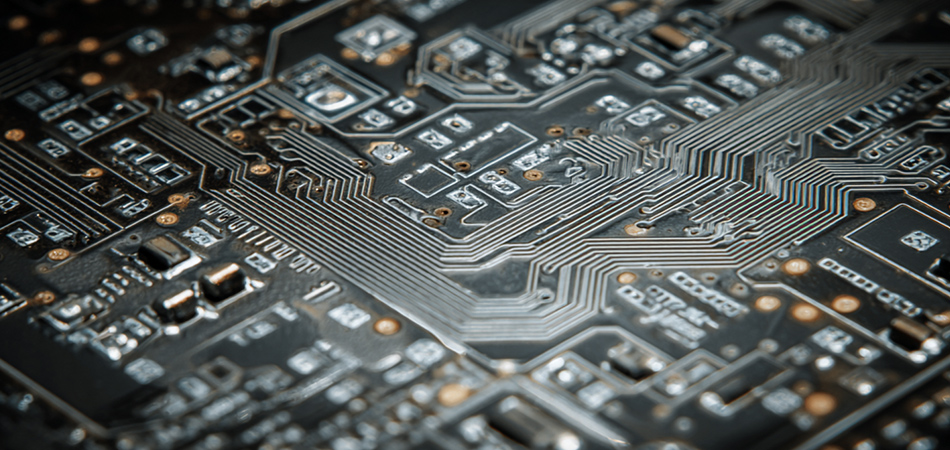
Material Selection for Weatherproof Outdoor Lighting PCBs
Substrate Materials
Aluminum - Based Substrates
Aluminum - based substrates are a popular choice for weatherproof outdoor lighting PCBs due to their excellent thermal conductivity and mechanical strength. The high thermal conductivity of aluminum allows for efficient heat dissipation from the LEDs, preventing overheating and ensuring optimal performance. Moreover, aluminum substrates can be easily formed and machined, enabling the creation of complex PCB designs. Different aluminum alloys can be selected based on specific requirements, with some offering enhanced corrosion resistance, making them suitable for harsh outdoor environments.
Ceramic Substrates
For high - performance outdoor lighting applications where extreme durability and reliability are required, ceramic substrates are an option. Ceramic materials possess exceptional thermal conductivity, electrical insulation properties, and chemical resistance. They are highly resistant to thermal shock, making them ideal for withstanding rapid temperature changes. Additionally, ceramics are not affected by UV radiation, ensuring long - term stability and performance in outdoor settings. However, ceramic substrates are generally more expensive and less flexible in terms of design compared to aluminum - based substrates.
Dielectric Layers
The dielectric layer in a weatherproof PCB serves to insulate the electrical components while facilitating heat transfer. High - quality dielectric materials, such as polyimide and ceramic - filled epoxies, are commonly used. Polyimide dielectrics offer excellent thermal stability and electrical insulation, allowing the PCB to operate reliably in high - temperature environments. They also have good mechanical properties, providing resistance to cracking and delamination. Ceramic - filled epoxies, on the other hand, enhance the thermal conductivity of the PCB, enabling more efficient heat dissipation. These materials are formulated to withstand exposure to moisture, chemicals, and UV radiation, ensuring the long - term integrity of the PCB.
Copper Layers
High - purity copper is typically used for the conductive layers in weatherproof PCBs to minimize electrical resistance and ensure stable power delivery to the LEDs. The thickness of the copper layer is carefully determined based on the power requirements of the lighting system. Thicker copper layers can handle higher currents, reducing the risk of overheating and voltage drops. To protect the copper layers from corrosion and oxidation, surface treatments such as electroless nickel immersion gold (ENIG) or organic solderability preservatives (OSP) are often applied. These treatments not only enhance the electrical performance but also improve the durability of the PCB in outdoor environments.
Protective Coatings
Conformal coatings are a key component in making PCBs weatherproof. These thin, protective films are applied over the surface of the PCB to shield the components from moisture, dust, chemicals, and UV radiation. There are several types of conformal coatings available, each with its own unique properties.
Acrylic conformal coatings are widely used due to their ease of application and good moisture resistance. They form a clear, flexible film that provides basic protection against environmental elements. Polyurethane coatings offer superior abrasion resistance and chemical protection, making them suitable for applications where the PCB may be exposed to harsh chemicals or mechanical stress. Silicone conformal coatings are known for their high - temperature resistance and excellent flexibility, allowing them to withstand extreme temperature fluctuations without cracking or peeling. Additionally, some advanced conformal coatings are formulated with UV - resistant additives to further enhance the protection against solar radiation.
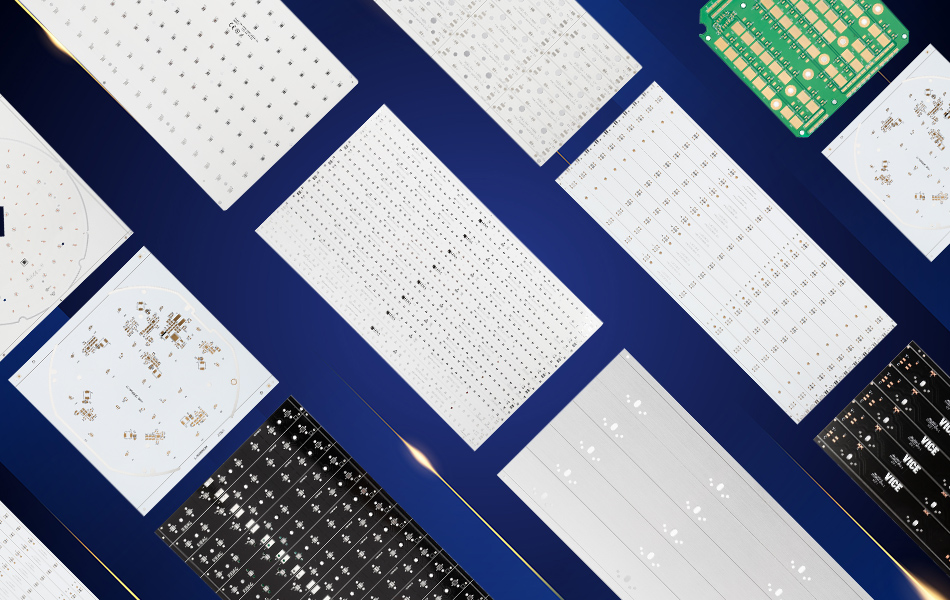
Design Considerations for Weatherproof Outdoor Lighting PCBs
Thermal Management Design
Efficient thermal management is crucial for outdoor lighting PCBs, as LEDs generate a significant amount of heat during operation. Excessive heat can reduce the lifespan and performance of the LEDs, leading to decreased light output and color degradation. To address this, weatherproof PCBs are designed with features that promote effective heat dissipation.
One of the key design elements is the use of a large - surface - area substrate, such as an aluminum core, which acts as a heat sink. Thermal vias are strategically placed to create direct pathways for heat to flow from the LEDs to the substrate, facilitating faster heat transfer. Additionally, the integration of external heat sinks or heat spreaders can further enhance the thermal performance of the PCB. These heat - dissipating components are designed to maximize the surface area available for heat exchange with the surrounding environment, ensuring that the LEDs operate within their optimal temperature range.
Electrical Design
The electrical design of weatherproof outdoor lighting PCBs must prioritize reliability and safety. Proper trace routing is essential to minimize electrical resistance, electromagnetic interference (EMI), and the risk of short circuits. In high - power lighting applications, multi - layer PCB designs are often employed to separate power and signal layers, providing better isolation and reducing the likelihood of interference.
Impedance control is also a critical aspect of the electrical design, especially in systems that require high - frequency operation or dimming functionality. By carefully controlling the impedance of the signal traces, designers can ensure stable signal transmission and prevent signal degradation, which could affect the performance and color quality of the LEDs. Additionally, the electrical design should include proper grounding and protection circuits to safeguard the PCB from electrical surges and transient voltages, which are common in outdoor environments.
Mechanical Design
The mechanical design of weatherproof PCBs must take into account the harsh outdoor conditions they will endure. The choice of materials and the overall structure of the PCB need to be able to withstand mechanical stresses such as vibrations, shocks, and wind loads. Reinforcement techniques, such as adding stiffeners or using stronger substrate materials, can be employed to enhance the mechanical strength of the PCB.
The size and shape of the PCB should be optimized to fit within the lighting fixture enclosure while allowing for proper ventilation and heat dissipation. The design should also facilitate easy assembly and disassembly, which is essential for maintenance and repair. Additionally, the PCB should be designed to be compatible with the mounting and fastening mechanisms of the lighting fixture, ensuring a secure and stable installation.
Enclosure Integration
To achieve weatherproofing, the PCB must be properly integrated into a suitable enclosure. The enclosure design is critical in protecting the PCB from the elements. It should feature tight - fitting seals, gaskets, and covers to prevent the ingress of water, dust, and other contaminants. The enclosure materials should also have high weather resistance, such as UV - stabilized plastics or corrosion - resistant metals.
Proper ventilation holes or slots may be incorporated into the enclosure design to allow for heat dissipation while preventing the entry of water and debris. Additionally, the enclosure should be designed to facilitate the routing of electrical cables and connections, ensuring a watertight seal around the cable entries. The integration of the PCB with the enclosure requires careful consideration of factors such as mechanical alignment, electrical insulation, and thermal interface management to ensure optimal performance and protection.
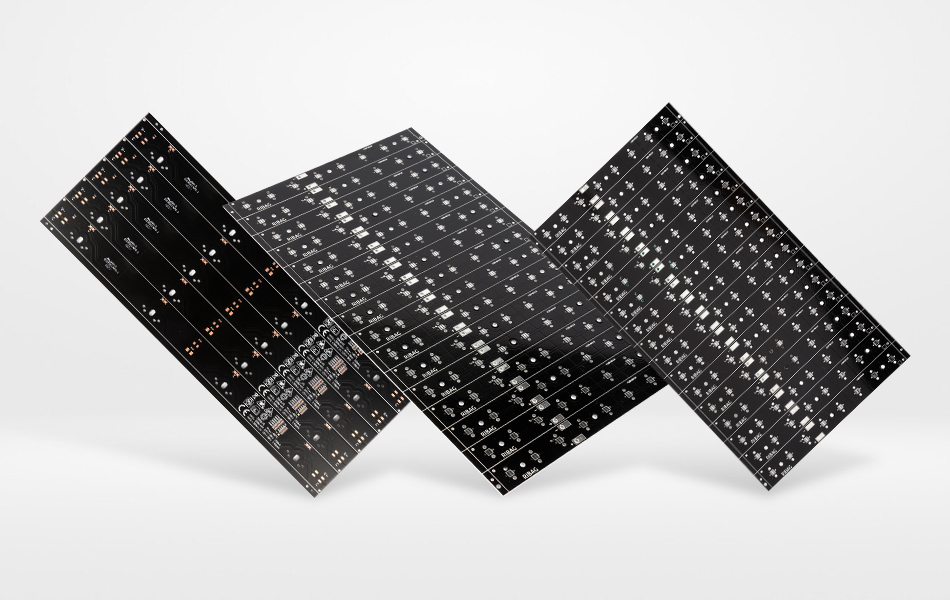
Manufacturing Processes for Weatherproof Outdoor Lighting PCBs
Drilling
The drilling process in PCB manufacturing creates holes for vias, component mounting, and other purposes. In the production of weatherproof outdoor lighting PCBs, both mechanical and laser drilling techniques are commonly used.
Mechanical drilling is a cost - effective method for creating larger holes, such as those for through - hole components or standard vias. It involves using rotating drill bits to remove material from the PCB. However, mechanical drilling may introduce issues such as drill bit wear, burrs, and hole - size inaccuracies, which need to be addressed through proper post - processing.
Laser drilling, on the other hand, offers high precision and the ability to create small, complex holes, such as microvias. It uses a laser beam to ablate the material, resulting in clean, accurate holes with minimal burr formation. Laser drilling is particularly suitable for high - density PCB designs where precise hole placement and small diameters are required. However, it is generally more expensive than mechanical drilling and may have limitations in terms of the thickness of the material that can be drilled.
Plating
The plating process in PCB manufacturing deposits a layer of copper on the drilled holes and the surface of the PCB to ensure electrical conductivity. It typically consists of two main stages: electroless plating and electrolytic plating.
Electroless plating is the first step, which deposits a thin, uniform layer of copper on non - conductive surfaces, such as the drilled holes. This provides a base layer for the subsequent electrolytic plating. Electroless plating is achieved through a chemical reaction that deposits copper ions onto the surface without the need for an external electrical current.
Electrolytic plating then builds up the copper layer to the desired thickness. In this process, an electrical current is passed through the PCB, causing copper ions in the plating solution to deposit onto the surface. Advanced plating techniques, such as pulse plating, can be used to improve the quality of the copper layer. Pulse plating involves applying the electrical current in short pulses, which can reduce voids, improve the uniformity of the copper layer, and enhance its mechanical properties.
Lamination
Lamination is the process of bonding the different layers of the PCB together, including the substrate, dielectric layers, and copper layers. High - pressure lamination is commonly used for weatherproof PCBs. In this process, the layers are stacked together with adhesive films or prepregs (pre - impregnated materials) between them. The stack is then subjected to high pressure and temperature in a laminating press, which causes the adhesives to cure and bond the layers firmly.
Proper lamination is essential for ensuring the structural integrity and electrical performance of the PCB. It helps to prevent delamination of the layers, which can occur due to thermal stress or mechanical forces. The quality of the lamination process also affects the thermal conductivity of the PCB, as any voids or gaps between the layers can impede heat transfer.
Conformal Coating Application
Applying the conformal coating is a critical step in making the PCB weatherproof. There are several methods for applying conformal coatings, including spraying, dipping, and brushing.
Spraying is the most common method for large - scale production, as it offers uniform coverage and can be easily automated. In the spraying process, the conformal coating material is atomized into fine droplets using a spray gun and applied evenly over the surface of the PCB. This method is suitable for coating complex - shaped PCBs with multiple components.
Dipping involves immersing the PCB into a tank of conformal coating material. The excess coating is then drained off, leaving a thin, even film on the PCB surface. Dipping is a simple and cost - effective method, but it may be less suitable for PCBs with large, uneven surfaces or components with complex geometries.
Brushing is a manual method that is often used for touch - up applications or for coating small, delicate areas of the PCB. It provides precise control over the amount of coating applied but is more time - consuming and less suitable for high - volume production.
After application, the conformal coating is typically cured using heat or ultraviolet (UV) light, depending on the type of coating material. Curing the coating ensures that it forms a hard, protective film with the desired properties, such as moisture resistance, chemical resistance, and mechanical strength.
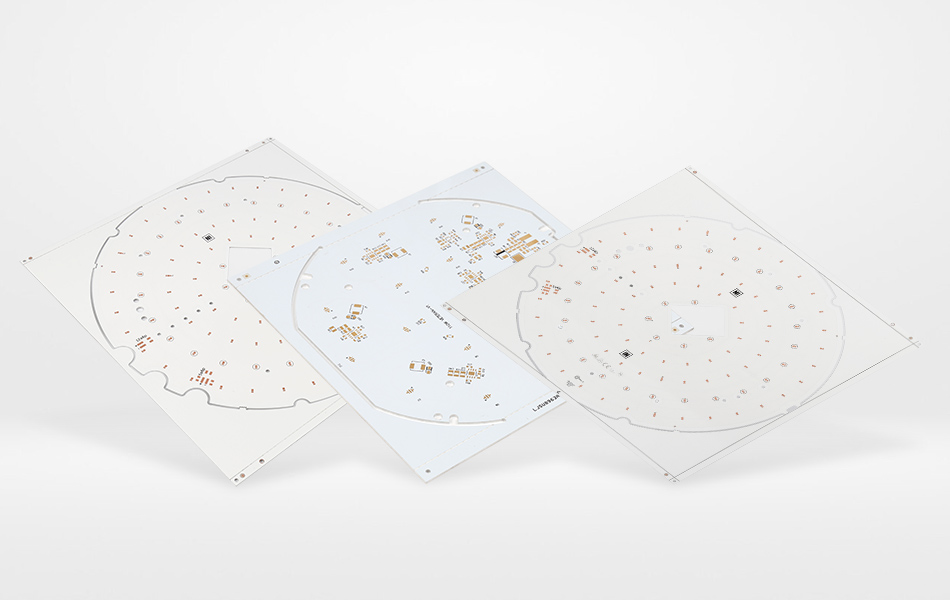
Quality Assurance for Weatherproof Outdoor Lighting PCBs
Incoming Material Inspection
Before the manufacturing process begins, all incoming materials, including substrates, copper foils, dielectric materials, and conformal coating materials, are thoroughly inspected. The substrates are checked for their flatness, thermal conductivity, and mechanical strength. Copper foils are inspected for thickness uniformity, surface roughness, and the presence of any defects.
Dielectric materials are tested for their electrical insulation properties, dielectric constant, and dissipation factor. These tests ensure that the dielectric layers will provide reliable electrical insulation and proper signal transmission. Conformal coating materials are evaluated for their viscosity, curing characteristics, adhesion to the PCB surface, and protective properties, such as moisture resistance and chemical resistance. Only materials that meet the specified quality standards are used in the manufacturing process to ensure the overall quality of the weatherproof PCBs.
In - Process Quality Control
During the manufacturing process, various quality control measures are implemented at different stages. After drilling, the holes are inspected for size accuracy, roundness, and the presence of burrs. Any defective holes can be reworked or the PCB rejected to prevent issues in subsequent processes.
In the plating process, the thickness and uniformity of the copper layer are continuously monitored. Thickness measurements are taken at multiple points on the PCB to ensure that the copper layer meets the specified requirements. The quality of the lamination process is also inspected, with techniques such as X - ray inspection used to detect any voids or delaminations between the layers.
During the conformal coating application, the coverage, thickness, and the absence of defects such as bubbles, pinholes, or uneven coating are checked. Automated optical inspection (AOI) systems can be used to quickly and accurately detect any coating defects, allowing for timely corrective actions.
Final Testing
Once the PCB is fully manufactured, it undergoes a series of final tests to verify its functionality, reliability, and weatherproof performance. Electrical tests include checking for short circuits, open circuits, and impedance matching to ensure that the PCB can effectively transmit electrical signals and power to the LEDs.
Thermal tests are conducted to evaluate the PCB's thermal management capabilities. This may involve subjecting the PCB to simulated operating conditions and measuring the temperature distribution across the board using infrared thermography. The goal is to ensure that the LEDs and other components operate within their recommended temperature ranges.
To confirm the weatherproof performance, the PCB is subjected to environmental tests. These may include water ingress tests, where the PCB is exposed to simulated rain or water jets to check for any signs of water penetration. Dust ingress tests are also performed to ensure that the PCB is protected against the entry of dust particles. Additionally, the PCB may be tested for its resistance to UV radiation, extreme temperatures, and humidity to verify its long - term durability in outdoor environments.
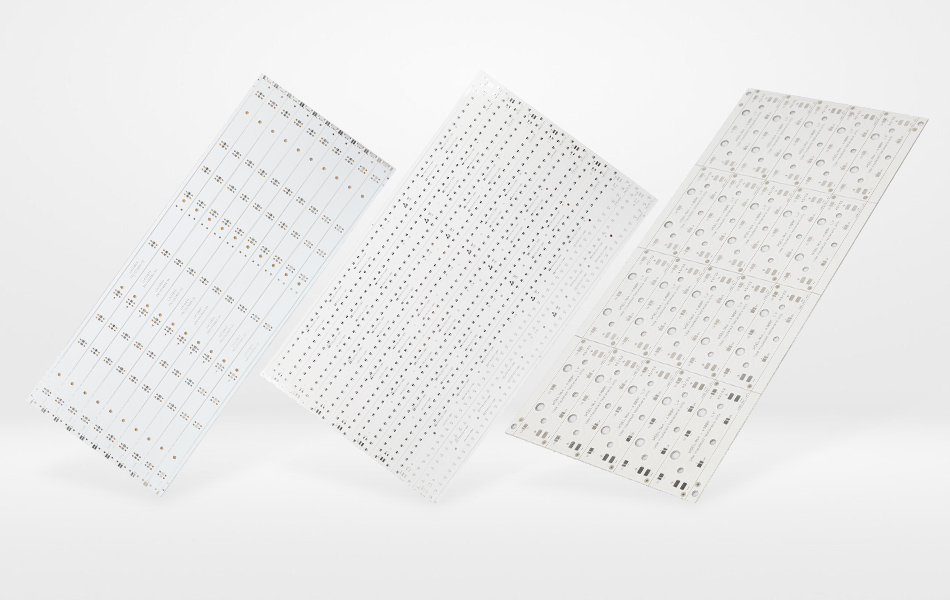
Applications of Weatherproof Outdoor Lighting PCBs
Street and Roadway Lighting
Weatherproof outdoor lighting PCBs are extensively used in street and roadway lighting systems. These systems are exposed to a variety of weather conditions, from heavy rain and snow to intense sunlight and high winds. The PCBs in streetlights and road signs ensure reliable operation of the LED lighting modules, providing consistent illumination for drivers, pedestrians, and cyclists. The weatherproofing features of the PCBs protect the electrical components from damage, reducing maintenance requirements and ensuring the safety and visibility of roadways.
Parking Lot and Garage Lighting
In parking lots and garages, weatherproof PCBs are essential for powering LED lighting systems. These environments are prone to moisture from vehicle exhaust, rainwater runoff, and occasional spills. The PCBs' ability to withstand these conditions ensures that the lighting remains functional, enhancing security and visibility in parking areas. The long lifespan and energy - efficiency of LED lighting, combined with the reliability of weatherproof PCBs, make them a cost - effective solution for large - scale parking lot and garage lighting installations.
Building Facade and Architectural Lighting
For illuminating building facades and creating architectural lighting effects, weatherproof outdoor lighting PCBs play a crucial role. These PCBs enable the installation of LED modules on the exterior of buildings, where they are exposed to the elements. The weather resistance of the PCBs ensures that the lighting systems maintain their visual appeal and performance over time, enhancing the aesthetic value of the buildings.

Got project ready to assembly? Contact us: info@apollopcb.com



We're not around but we still want to hear from you! Leave us a note:

Leave Message to APOLLOPCB
